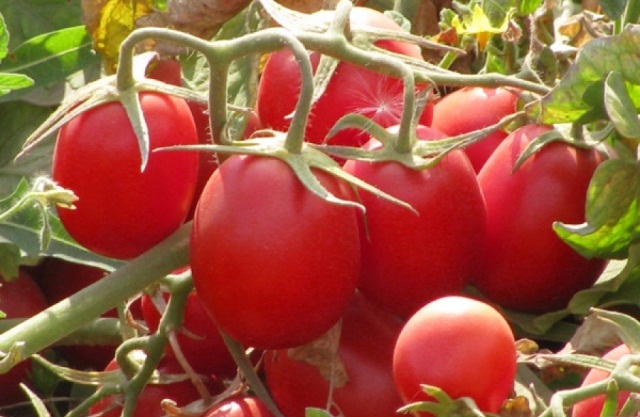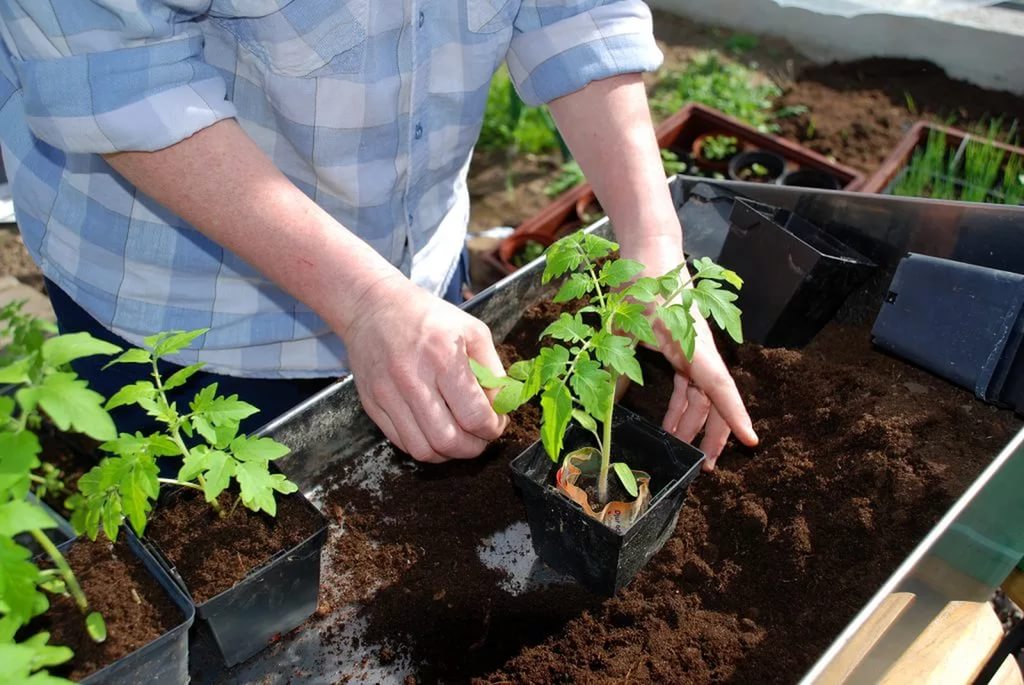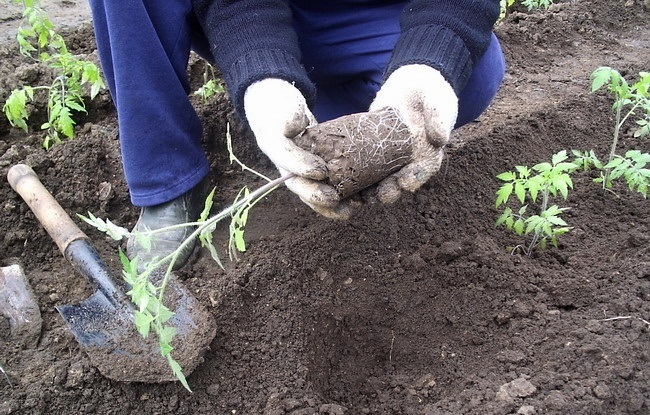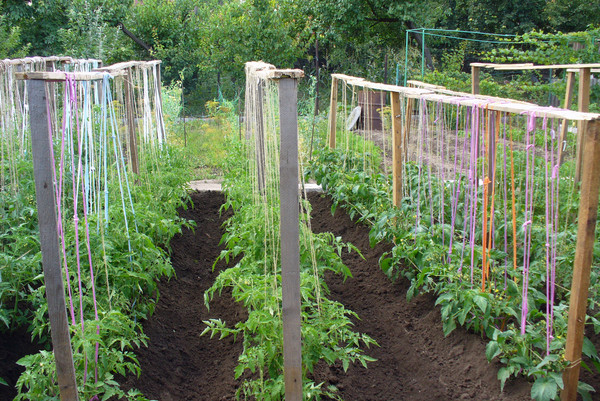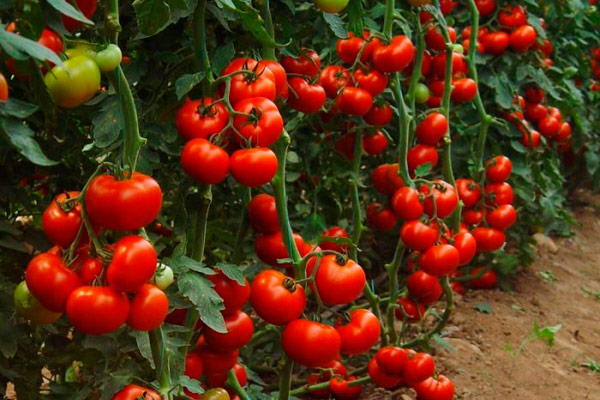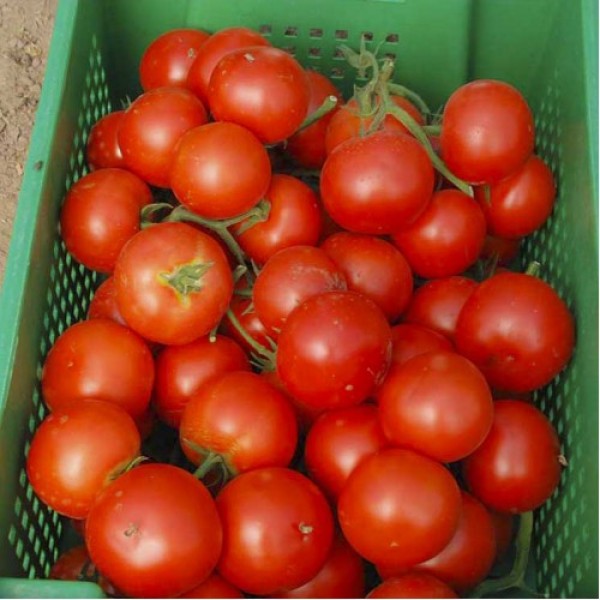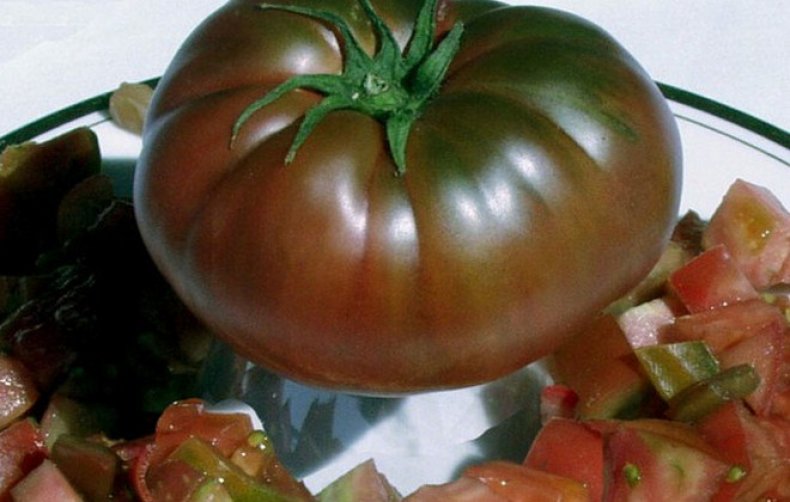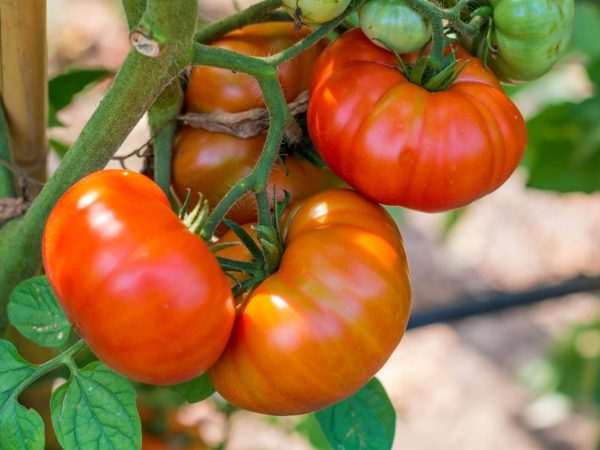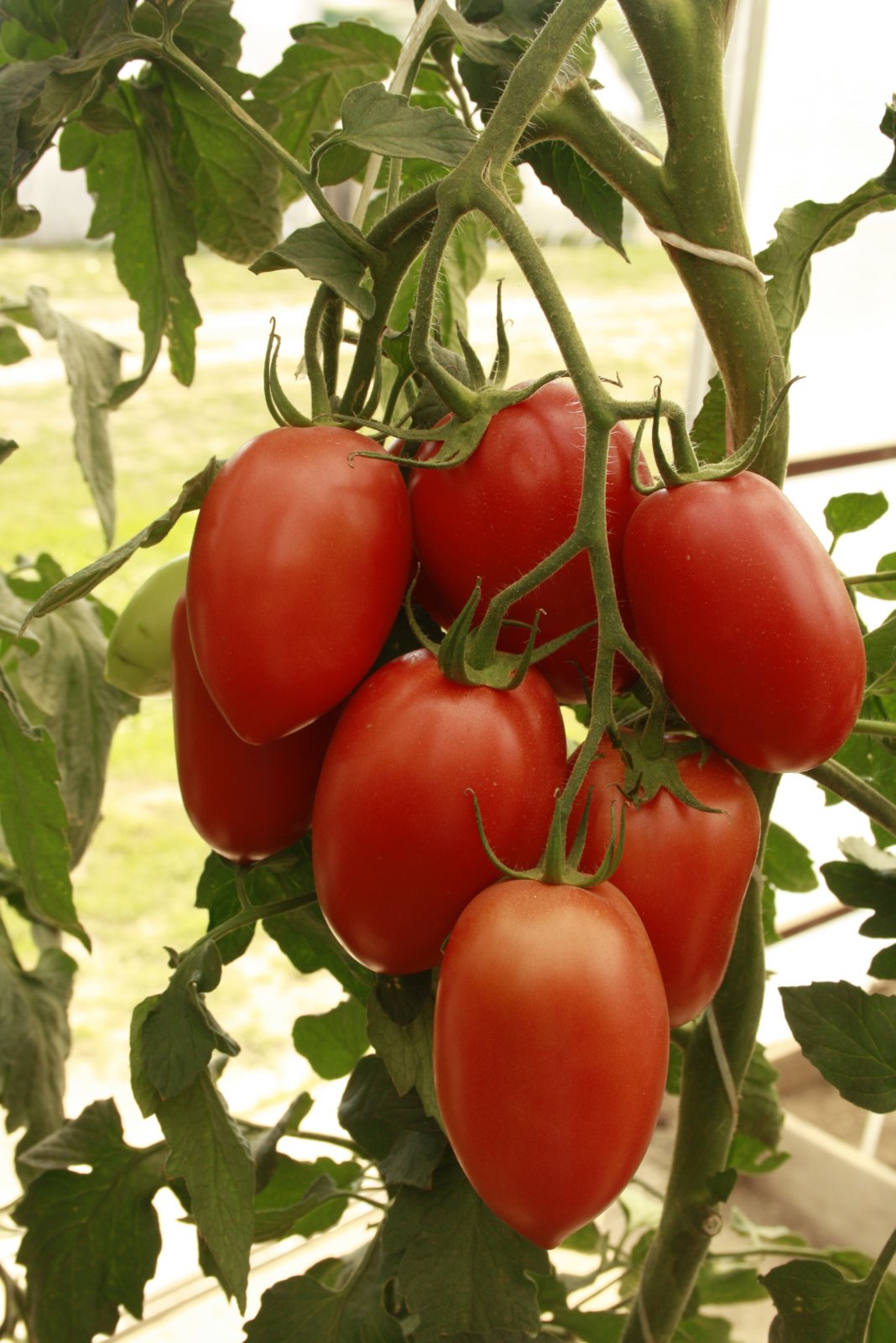Content:
Tomato Marusya was bred by domestic breeders in 2007, officially registered in the State Varietal Register. The seeds have the necessary certified certificate and have every chance of free sale at points of sale.
Description of the variety
Maroussia tomatoes are a medium early, determinant variety. From germination to technical maturity - 105-110 days.
The characteristics of the Maroussia tomatoes and the description of the variety are as follows. The plant is medium-sized - 50-100 cm tall. The branches are densely leafy, while they are arranged so that they do not shade flowers and fruits. Leaves are deep green, usual type, slightly pubescent. The inflorescences are simple, the first is laid over 6-7 leaves, then every 1-2. One flower cluster forms up to 8 buds. The peduncle is articulated.
Description of Maroussia tomatoes: small - 60-80 g, plum-shaped or egg-shaped. The pulp is fleshy, dense, with a high dry matter content, while quite juicy. Seed chambers - 2-3. The skin is not thick, strong, the fruits do not crack. In the full ripening phase, the vegetable acquires a bright red color. The taste is sweet, rich. Pronounced tomato aroma. Visually, tomatoes resemble a large bunch of grapes - tomatoes (from 5 to 10 pieces) of an elongated shape are closely planted to each other.
Average yield - up to 7-7.5 kg / sq. meter, up to 2 kg per bush. High-yielding varieties require a collection of at least 3 kg per bush.
Agrotechnics
Growing tomato Marusya is possible in all regions of the country, it easily adapts to arid regions and areas with high humidity. The soil prefers sandy loam or loamy with a neutral reaction (pH is in the range of 5-6, but not more than 6.5). The best precursors for tomato are: all types of cabbage, cucumbers, carrots, beets, onions, zucchini and melon. It is undesirable to grow tomato after: eggplant, peppers, potatoes and tomatoes.
Tomato Marusya is grown in a seedling and non-seedling way. Further cultivation of tomato depends on temperature conditions: in the southern warm regions, the Marusya tomato gives an excellent harvest in the open field, and in areas where there is little heat and sunlight, a good result can be obtained only under the film.
The soil for planting seeds for seedlings can be taken ready-made, purchased, in which all the necessary trace elements and substances are present, or made independently from 1 part of sod land, humus and 0.5 part of sand.
For cultivation, you can use any containers (boxes, pots), into which prepared soil is poured, on the surface of which tomato seeds are laid out and sprinkled with soil, in the optimal version - about 2 cm thick.
The best temperature regime for the germination of tomato seeds in Maroussia is 23-25 degrees Celsius. After seedlings emerge, the room temperature should be lowered to prevent the seedlings from pulling out.
Picking plants into pots (containers) is carried out after tomato sprouts release 2 true leaves.
Young tomato seedlings are required:
- Lots of light. The maximum possible natural lighting, plus additional lighting using special devices;
- Abundant humidity;
- Suitable temperature readings.
Planting tomatoes in open ground is carried out only after the frosts have passed (end of May, June), depending on the growing region and climatic conditions, the main reference point is the warmed earth up to 20-25 cm in depth by 16 degrees.
The readiness of a plant for transplanting into open ground is indicated by the appearance of the first flower cluster on it. It will be better to complete the transplant procedure until the buds begin to open. If it is still cold outside, and the tomato has begun to bloom, you need to carefully pinch off the peduncle, which will allow you to transplant the bush into open ground with minimal losses for it.
Healthy tomato seedlings are different:
- Powerful root system;
- Thick and sturdy stem;
- Dense, fleshy foliage.
It is recommended to plant tomato bushes according to the scheme: 70 cm - in the aisle and 60 cm - between plants in a row, per 1 sq. meter - up to 6-7 plants. The site should be open, sunny, without shading, away from tall trees and fences. The bush is formed into 1-2 stems.
Caring for a tomato Marusya consists of:
- Regular weeding of the site. Mulching combats this task and helps to retain moisture under the bushes;
- Systematic irrigation: warm, settled barrel water is used. It is advisable to use drip irrigation;
- Loosening the ground near the root system, in order to avoid drying out the soil around the plant, optimally after each watering;
- Tying, if appropriate;
- Pasynkovaniya (up to the first brush).
Top dressing
Any kind of tomato literally draws out all the nutrients from the soil, significantly depleting it. Therefore, systematic feeding becomes a mandatory attribute in caring for a plant, otherwise the risk of its abnormal development increases.
The first feeding of seedlings is carried out 10 days after planting in the exhaust gas. Mineral fertilizers (nitrogen, potash, phosphoric) are used. Then every 2 weeks, only without nitrogen fertilizers, otherwise the green mass will begin to grow intensively.
Pests and diseases
Among the pests that affect the tomato Marusya, the following are especially distinguished: spider mites, slugs and whiteflies. For the fight are used:
- For slugs - lime, tobacco dust, soap solution, wood ash, Chlorophos;
- From spider mites - Karbofos;
- From whiteflies - Confidor.
Advantages and disadvantages
Tomato Marusia boasts an extensive list of its advantages, it has practically no imperfections.
Positive aspects of tomato Marusya:
- Amicable and abundant ripening of fruits;
- Resistance to temperature extremes;
- Drought resistance;
- High fruiting;
- Good harvest even in adverse weather conditions;
- The ovary appears even at unstable temperatures;
- Excellent taste;
- Commercial appearance;
- The strength of attachment to the branches, do not fall off;
- Excellent keeping quality;
- Resistance to verticillium and fusarium wilting;
- The versatility of using ripe fruits: fresh, in cooking and for delicious preparations for the winter.
Marusya tomatoes are a great option for any gardener. The unpretentiousness of the plant, its compact size and at the same time a very decent harvest is just a paradise for a summer resident.
Definitely, the tomato variety Marusya deserves attention, moreover, it is already loved by many summer residents. It is popular, first of all, for its ability to easily take root in the driest regions and the excellent taste of fruits. There are, however, many unflattering reviews about the skin, otherwise only positive.
